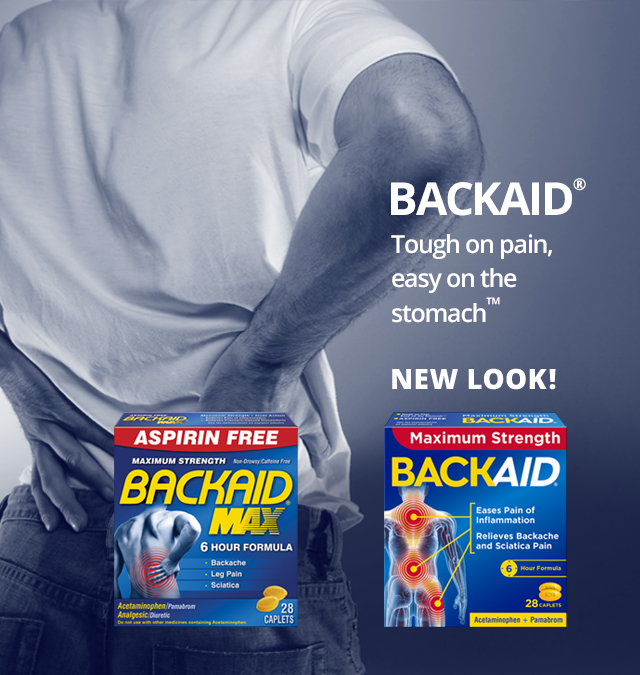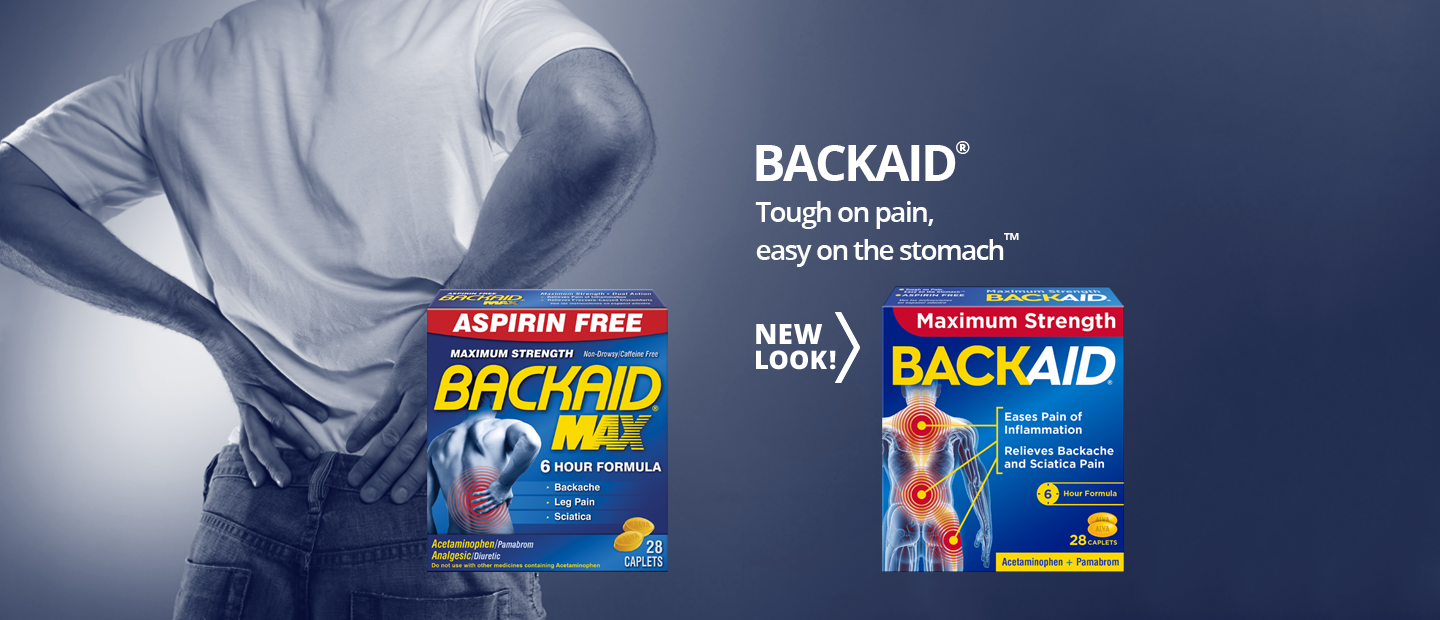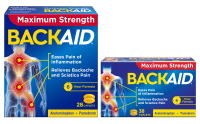What is the dosage for Backaid Max?
The dosage for Backaid Max is two caplets with a full glass of water every 6 hours while symptoms persist but not to exceed 3 doses (6 caplets) in 24 hours, or as directed by a doctor. Be sure to read all product package label Directions, Uses and Warnings and follow them carefully.
Can I use Backaid Max with my other medication(s)?
We recommend speaking with your doctor or your pharmacist before using Backaid Max with any other medications or dietary supplements.
What are the active ingredients in Backaid Max?
Each Backaid Max caplet contains 500 mg acetaminophen, a pain reliever, and 25 mg of pamabrom, a mild diuretic.
Why does Backaid Max have the diuretic pamabrom in it?
The diuretic pamabrom can help reduce periodic excess water retention that can lead to pressure-related discomforts.
Why is Backaid Max so difficult to get out the package?
The difficulty you may experience when opening Backaid Max blister packs is most likely due to the Child Resistant Closure (CRC) packaging. Federal regulations require CRC packaging for products that contain acetaminophen, such as Backaid Max. We apologize for the inconvenience. As recommended on the blister card backing, you may find it to be easier to open the blisters with scissors. However, to better serve our consumers, we also offer an alternative to our blister card packaging in the form of an easy open bottle. Backaid Max bottles are currently available at Rite Aid and Walgreens.





